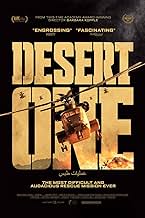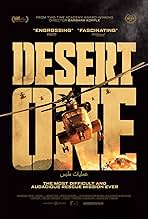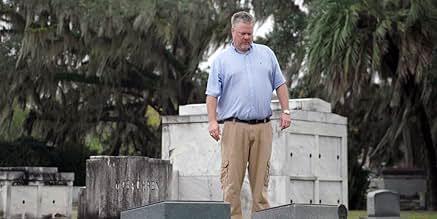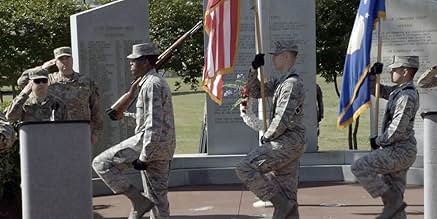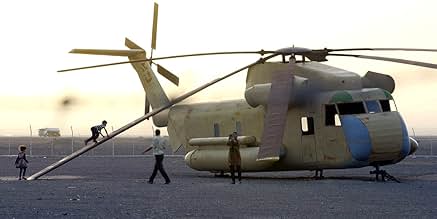Aggiungi una trama nella tua linguaUsing new archival sources and unprecedented access, master documentarian Barbara Kopple reveals the story behind one of the most daring rescues in modern US history: a secret mission to fre... Leggi tuttoUsing new archival sources and unprecedented access, master documentarian Barbara Kopple reveals the story behind one of the most daring rescues in modern US history: a secret mission to free hostages of the 1979 Iranian revolution.Using new archival sources and unprecedented access, master documentarian Barbara Kopple reveals the story behind one of the most daring rescues in modern US history: a secret mission to free hostages of the 1979 Iranian revolution.
- Regia
- Sceneggiatura
- Star
- Premi
- 1 candidatura in totale
- Self - U.S. Army
- (as Maj James O. Roberts)
- Self - Deputy to Chairman, Joint Chiefs of Staff
- (as LTG John Putsay)
- Self - U.S. Air Force
- (as TSgt Kenneth Bancroft)
- Self - Delta Force
- (as Maj Lewis "Bucky" Burruss)
- Self - Delta Force
- (as Maj William G. Boykin)
- Self - U.S. Marine Corps
- (as SSgt Bucky Buchanan)
- Self - U.S. Marine Corps
- (as GySgt John Sigman)
- Self - U.S. Marine Corps
- (as Col Ed Seiffert)
Recensioni in evidenza
Things started off well in 1977 with a Israel and Egypt finally agreeing to meet which laid the groundwork for the Camp David accords that formally ended their conflict in the autumn of 1978. However, that was the high point because on the other side of that region in Iran which was one of the US's closes allies was going through some political turmoil, with riots and demonstrations against the Shah's rule. This culminated in a revolution which saw the Shah being forced to leave the country in January 1979 and to be replaced by the exiled Ayatollah Khomeini returning to be proclaimed as supreme leader. This was an Islamic revolution of the highest order and was a serious challenge to the Carter administrations regional security interests.
However, things were only going to get worse because while in exile the Shah needed treatment for cancer and was admitted to hospitals firstly in Texas and then New York. This infuriated the Iranians who demanded that the Shah be returned to Iran to answer for his alleged crimes. When this was refused, Iranian militants/students stormed the US embassy in Tehran and took the 52 staff members hostage and refused to release them unless the Shah was returned to Iran. Even after the Shah died in August of 1980 the hostages remained, and it wasn't until January of the 1981 with the swearing in of a new American President that the embassy staff were finally allowed to leave Iran.
This documentary "Desert One" is an account of a bold and ambitious rescue attempt by the US in April of 1980. The backdrop of this was a Presidential election in November of 1980 and a very tense time between the USSR and USA with the invasion of Afghanistan in December of 1979 as well as the issue with the hostages in Iran. Rather than the cold war easing as Carter hoped, things became very tense. There was a feeling that Carter had been naive and duped by the Soviets and with the USA seemingly unable to do anything about the hostages, Carter's White House looked impotent.
The plan was to land aircraft and helicopters in Iran at a place code named Desert One. There all the special forces and CIA operatives would rendezvous. There was also a a CIA group were already in Tehran that would commandeer trucks, and they would all meet at Desert two about 60 miles from Tehran. The main assault group would then all drive to the embassy and free the hostages and then drive to a nearby stadium where the helicopters would be waiting and transport them to an abandoned airfield where they would be transported out of Iran to a safe country.
The beginning of the modern special forces was started by the British in WW2 during the desert campaign against the Afrika Corp in 1942. This was clandestine operations behind enemy lines destroying ammunition dumps and fuel supplies. Films such as "Sea of Sand" (1958) and "Play Dirty" (1970) were based to these types of excursions. The UK's special forces Special Air Service (SAS) then by the 1960's also moved into counter terrorism. Ironically only a month later in May of 1980 the Iranian embassy in London was taken over by anti-Khomeini militants and after 5 days the siege came to an end when the SAS successfully stormed the embassy and killed the terrorists and released the hostages. Another notable SAS raid was at Pebble Island in the Falklands war in 1982 where under the cover of darkness they destroyed 11 Argentine aircraft, ammunition and fuel storage areas at a base close to where the British were going to land. Prior to this in 1976 Israeli special forces successfully rescued American and Jewish passengers that had been taken hostage by Palestinian terrorists after they had hijacked their plane and landed it in Uganda.
In 1975 the USA the year before in had embarked on a rescue mission (which is known as the Mayaguez incident) on an island off Cambodia whose military forces had seized an American freighter and its crew. It's generally accepted that the military attack to rescue the crew was a shambles.
The mission was approved by President Carter and was led by the Delta force and supported by, air force, navy, army Rangers and CIA operatives. The mission was aborted when some of the helicopters used for the rescue malfunctioned probably due to damage caused by the severer sandstorms they had to fly through. Tragedy struck when a helicopter struck an aircraft on the ground and the resulting carnage left 11 Americans killed.
There is no doubt that the United States had the personnel, the equipment and the logistical ability to carry out such a rescue. The rescue of the Israeli hostages in Uganda and say the SAS attack on Pebble Island which probably both encountered unexpected obstacles nevertheless were successful because what they were both attempting was "a one and done hit" on enemy territory where both had the element of surprise. The trouble with eagle claw was that it had so many moving parts that everything would have had to gone right from the very beginning until the very end. Desert One, Desert Two, the embassy, the soccer field and the airfield where they planned to take off from was a total of "five hits" where if anything had gone massively wrong would have collapsed the rescue would have been an even more of a disaster.
The fact that the plan tripped up at the first fence was an indication of how complicated it was going to be. For a Hollywood movie the script was perfect, but in the real world the rescue was too convoluted to have any chance of success, at best it was a long shot and at worst it didn't really stand a chance. In a way being aborted at the outset although demoralizing, was probably the better outcome than if it had been compromised further down the line at the embassy or at the airfield.
Being unable to foresee how the sandstorms could cause so much difficulty for the aircraft and their equipment and overlooking the fact that the place they set up Desert One had a main road running through it was a massive oversight which indicated that too many who would have known better were excluded from discussing the mission. There was too much "group think" and not enough critical analysis from experienced people outside the military planners involved.
The plan should have been briefed by some military experts who had the job of going through the plan and picking it apart. The military people involved who believed in their plan and really wanted to have a go and officials in the administration who were easily persuaded into supporting eagle claw because it might get them out of a political straight jacket as diplomacy seemed to have stalled.
Sad to whitewash history when you have the chance to tell the truth.
From Esquire : What happened next Mr. Barnes has largely kept secret for nearly 43 years. Mr. Connally, he said, took him to one Middle Eastern capital after another that summer, meeting with a host of regional leaders to deliver a blunt message to be passed to Iran: Don't release the hostages before the election. Mr. Reagan will win and give you a better deal. Then shortly after returning home, Mr. Barnes said, Mr. Connally reported to William J. Casey, the chairman of Mr. Reagan's campaign and later director of the Central Intelligence Agency, briefing him about the trip in an airport lounge.
Mr. Barnes identified four living people he said he had confided in over the years: Mark K. Updegrove, president of the L. B. J. Foundation; Tom Johnson, a former aide to Lyndon Johnson (no relation) who later became publisher of the Los Angeles Times and president of CNN; Larry Temple, a former aide to Mr. Connally and Lyndon Johnson; and H. W. Brands, a University of Texas historian. All four of them confirmed in recent days that Mr. Barnes shared the story with them years ago. "As far as I know, Ben never has lied to me," Tom Johnson said, a sentiment the others echoed. Mr. Brands included three paragraphs about Mr. Barnes's recollections in a 2015 biography of Mr. Reagan, but the account generated little public notice at the time.
Lo sapevi?
- BlooperThe occupants of the C130 are looking out of the left-hand paratroop door at the fire; someone closes the door but it slides left to right. The paratroop door opens vertically, so it should slide down to close.
- Citazioni
Jimmy Carter: Do you have any report on the helicopter's location?
- ConnessioniReferences ABC News Nightline (1979)
I più visti
Dettagli
- Data di uscita
- Paese di origine
- Sito ufficiale
- Lingue
- Celebre anche come
- Desert One - Gidseldramaet i Teheran
- Luoghi delle riprese
- Aziende produttrici
- Vedi altri crediti dell’azienda su IMDbPro
Botteghino
- Budget
- 1.500.000 USD (previsto)
- Tempo di esecuzione1 ora 48 minuti
- Colore
Contribuisci a questa pagina





